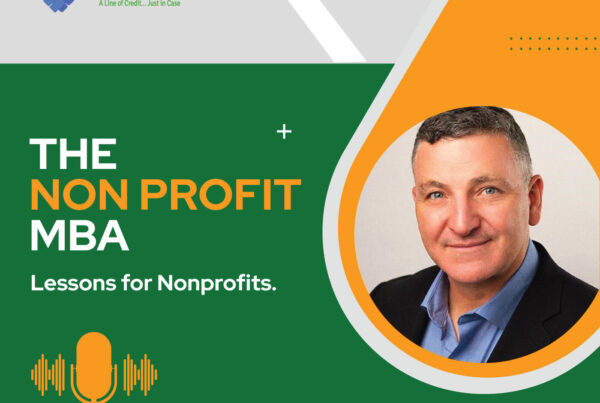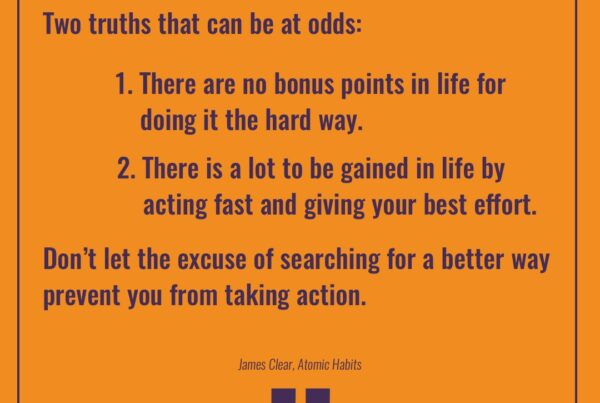Last week I attended the Social Venture Partners International conference here in Minneapolis. I’ve been an associate partner at SVP since 2006 and this was my first international conference. On Friday morning our keynote speaker was the amazing Dan Pallotta, a leading expert on innovation in the nonprofit sector. His book Uncharitable: How Restraints on Nonprofits Undermine Their Potential is a must read.

So as a follow-up to last week’s post: “Ending the Nonprofit Starvation Cycle” which talked about administrative overhead and the question most often asked of a charity: What is your administrative overhead? The myth and assumption is that lower is better. I made a mild attempt to dispel this myth but Dan takes the topic full-on. Here’s some of what he had to say:
Dan’s observation is that we have two rule books: One for charity and one for the rest of the economic world. We blame capitalism for creating huge inequities in our society. . . and
we refuse to allow the nonprofit sector to actually use the tools of capitalism to rectify those inequities.
He took us through 5 areas where the rule book of discrimination plays out:
- Compensation: In the for-profit sector we allow the payment of a competitive wage based on the value people produce, but we don’t like to see people make a lot of money in the nonprofit sector. We have a very visceral reaction to the notion that anyone would make a lot of money helping other people. But we have no similar visceral reaction when people make a lot of money NOT helping others or even hurting others.
- Advertising & Marketing: We give the for-profit sector huge latitude to spend spend spend and find new customers until the last dollar no longer produces a penny of value. We don’t like to see donations spent on advertising in charity. Our attitude is, if you can get the advertising for free or donated, I’m fine with that. But I don’t want you spending my donation on advertising because I want my money to go to the needy. As if the money spent on advertising couldn’t potentially and dramatically enlarge the amount of money going to the needy.
John Kenneth Galbraith, the Canadian American economist said, “The for-profit sector creates desires. It creates wants that you didn’t know you had. First it creates the product and then through the massive engines of marketing and advertising it creates the market for that product. But we are supposed to create a market for philanthropy to end hunger and disease and everything else without actually spending any money.” - Risk taking for new donors: Specifically in pursuit of new donors. Specifically in the area of fundraising. We are not talking about taking programmatic risks to figure out a new way to mentor teen gang members or build wells in Africa. Here again the for-profit sector gets every advantage. Paramount Pictures can make a $150 million movie that flops and no one calls the attorney general. It’s all considered part of their business model to make a lot of movies. Some of them succeed and some of them fail. More succeed than fail. And on that basis they build huge empires.
So nonprofit organizations are petrified of trying any bold, risky, really high profile community fundraising endeavors for fear that if the thing fails that will be the end of them. Meanwhile Hollywood, every week is placing $150 million bets on ridiculous movie ideas. - Time horizon – the time it takes to get a return on investment to our donors: Amazon is a great example. They went for six years without any return to investors because everyone understood there was a long-term objective called building market dominance at the end of the line.
If some charity ever had an incredible vision of building scale that required that for six years no money was going to go to the needy we’d expect a crucifixion. - Profit: The for-profit sector can pay people a financial return in order to attract their capital. The nonprofit sector by definition cannot. So the for-profit sector monopolizes the multi-trillion dollar capital markets; the nonprofit sector is starved for growth capital and risk capital.
You put these five things together: You can’t use money to lure talent; you can’t advertise on the scale the for-profit sector can; you cannot take the kinds of risks in pursuit of new customers; you don’t have the same amount of time to find those customers; and you don’t have the stock market. So we put the nonprofit sector at the most unbelievably extreme disadvantage on every level. . . and we call the whole system charity.
There are 3 main problems with the overhead question:
- Makes us think overhead is not part of the cause — the important work being done.
- Forces charities to go without the things they really need to solve the problem.
- Gives donors bad information.
The most memorable line for me from Dan was: Fundraising builds capacity to build capacity.
What I took away from Dan’s remarks: Our job is to change the status quo. Ask different questions. If, indeed, we want to end hunger or homelessness are we willing to level or change the playing field and give nonprofits the resources to get the job done? Are we?
This post was included in Withism’s from Lori: Boldness, Clarity & Wisdom for Fundraising Professionals Making a Difference (Volume 1), now available in paperback, on Kindle, and Nook.







